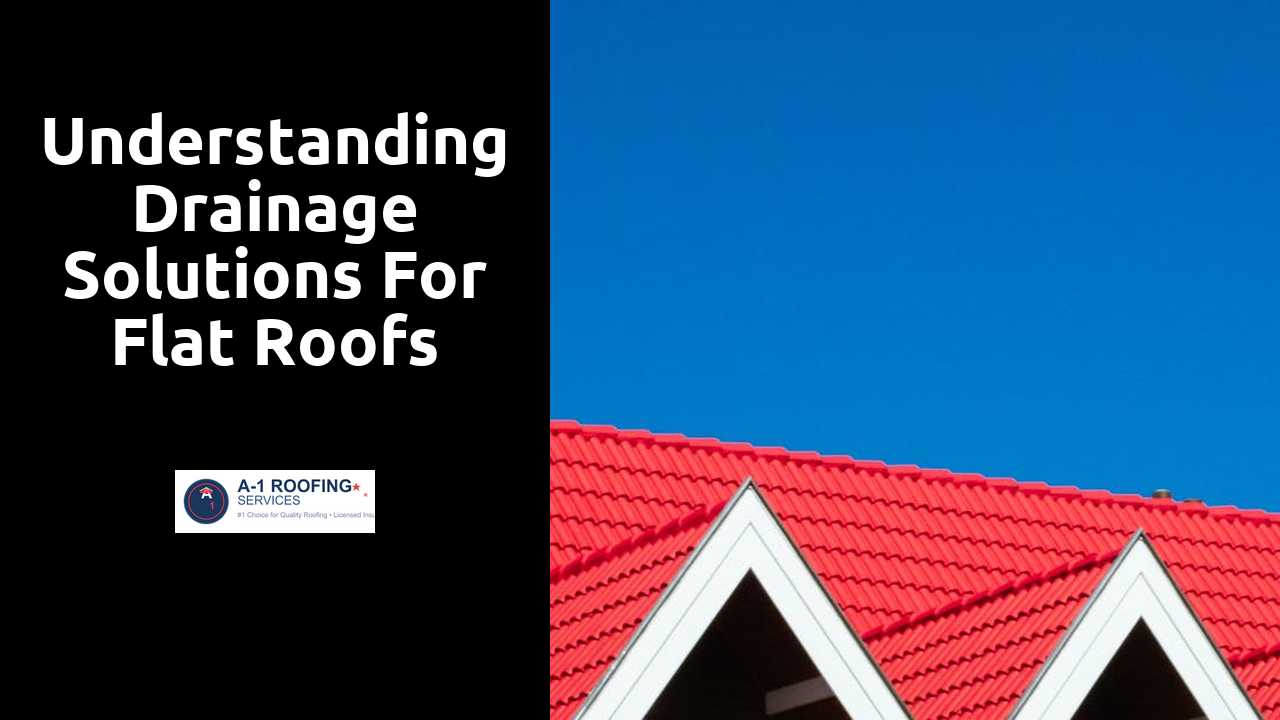
Understanding Drainage Solutions for Flat Roofs
Table Of Contents
Maintenance Tips for Flat Roof Drainage
To ensure optimal drainage on flat roofs, regular inspections are essential. Checking for debris accumulation, such as leaves and dirt, can prevent blockages that lead to water pooling. Clearing gutters and downspouts on a consistent basis minimizes the risk of overflow during heavy rain. Additionally, inspecting seams and flashings for wear can help identify potential leaks before they become significant problems.
Establishing a cleaning regimen twice a year can maintain the overall health of the drainage system. Pressure washing can be effective for removing stubborn grime and algae from the roof surface. It is advisable to check for any signs of wear on drainage components, particularly during the inspection. Addressing small repairs promptly can prolong the life of the entire roofing system and improve drainage efficiency.
Click here for additional info.
Regular Inspections and Cleaning Regimens
Routine inspections are essential in maintaining effective drainage on flat roofs. It is advisable to check for debris, such as leaves, dirt, and other materials that may clog drain systems. Scheduling these inspections at least twice a year, particularly after seasonal changes, can help identify potential problems before they escalate. In addition to seasonal checks, post-storm evaluations can be particularly beneficial in assessing any water accumulation that may have occurred.
Cleaning regimens should be part of a proactive maintenance strategy. Removing debris from gutters and drains not only facilitates proper water flow but also extends the life of roofing materials. Using a gentle approach during cleaning is crucial to avoid damaging the roof’s surface. Establishing a consistent maintenance schedule can significantly reduce the risk of drainage issues and promote the longevity of the flat roof system.
Signs of Poor Drainage on Flat Roofs
Water accumulation on a flat roof is a primary indicator of ineffective drainage. Puddles that persist for more than 48 hours following rainfall suggest that the drainage system may be clogged or poorly designed. Additionally, rust spots or mold growth can emerge due to trapped moisture, potentially leading to further deterioration of roofing materials. Spotting these signs early is crucial for preventing more extensive damage.
Another noticeable sign is the presence of sagging or uneven areas on the roof's surface. These depressions can create areas where water collects, exacerbating drainage problems. Checking for cracks along seams or the perimeter of the roof is essential, as they may allow water infiltration, causing leaks. Being aware of these signals can help homeowners address drainage issues promptly.
Identifying Water Accumulation Issues
Water accumulation on flat roofs often leads to significant structural concerns. Homeowners should be vigilant in observing any unusual ponding or pooling after rainstorms. During dry spells, submerged areas might become evident as they retain moisture longer than surrounding sections. Small depressions can also indicate underlying issues that require immediate attention.
Examine roof surfaces for deterioration and sagging, which can be telltale signs of long-term water issues. Discoloration or mold growth may also appear in areas affected by stagnant water, indicating potential risks for both health and structural integrity. Maintaining regular inspections allows for early detection, which is critical in preventing costly repairs and ensuring the longevity of the roof.
Impact of Landscaping on Roof Drainage
Landscaping decisions can significantly influence how water is managed around a flat roof. Features such as slopes, planting beds, and trees may direct rainwater towards or away from the structure. When plants are positioned too close, their roots can obstruct drainage systems, potentially leading to blockages. Additionally, improper grading around the property can cause water to pool near the foundation, increasing the risk of leaks and water damage.
It is important to consider the relationship between landscaping and drainage. Installing features like rain gardens or swales can aid in effectively channeling water away from the roof and foundation. Furthermore, using permeable materials for walkways can enhance water absorption and minimize runoff. Homeowners should ensure that landscaping complements the drainage system rather than complicates it, maintaining optimal conditions for both aesthetics and functionality.
Managing Water Flow from Surrounding Areas
Effective management of water flow from surrounding areas is crucial for maintaining a flat roof's integrity. Proper grading of the landscape around the building helps direct rainwater away from the structure. When landscaping elements, such as flower beds or pathways, are strategically placed, they can prevent water pooling near the foundation. This setup reduces the risk of excess water weight on the roof and diminishes potential damage from water intrusion.
Installing drains, gutters, or drainage channels not only aids in directing water away but also enhances overall water management. These systems can capture runoff from nearby structures or hard surfaces, guiding it away from the flat roof. Regular maintenance of gutters and drains ensures they remain clear of debris that could obstruct water flow. By proactively managing water flow, property owners can protect their roofs from deterioration and prolong the lifespan of their investment.
Related Links
Best Practices for Insulating Flat Roof StructuresCommon Mistakes to Avoid in Flat Roofing